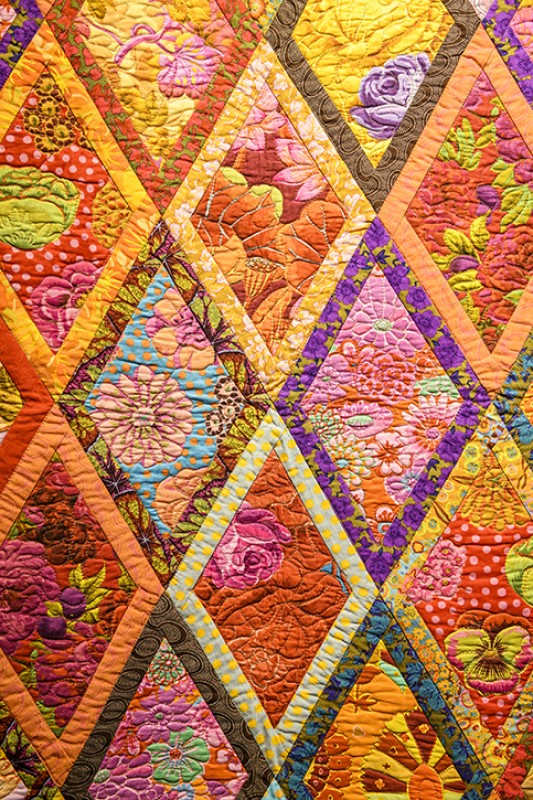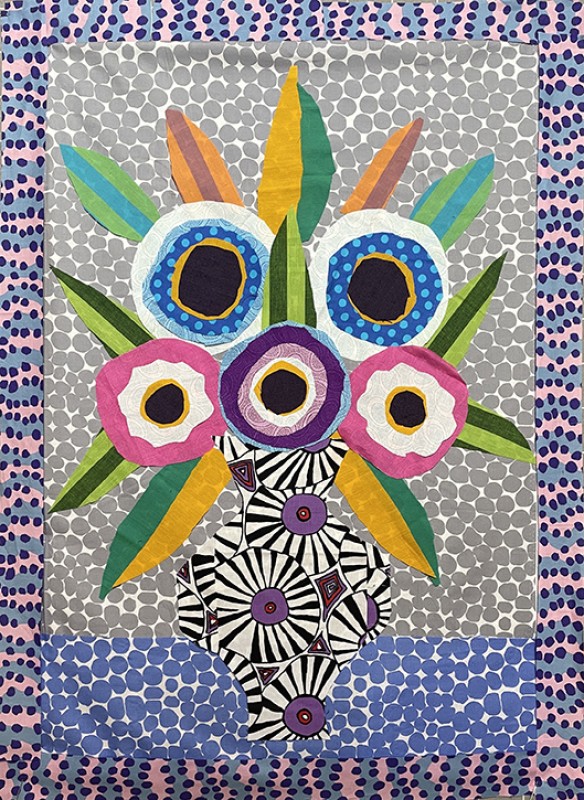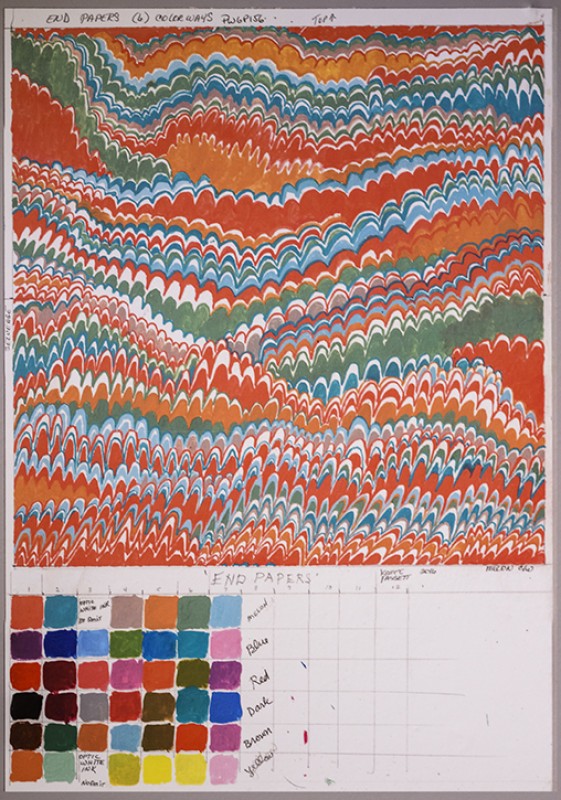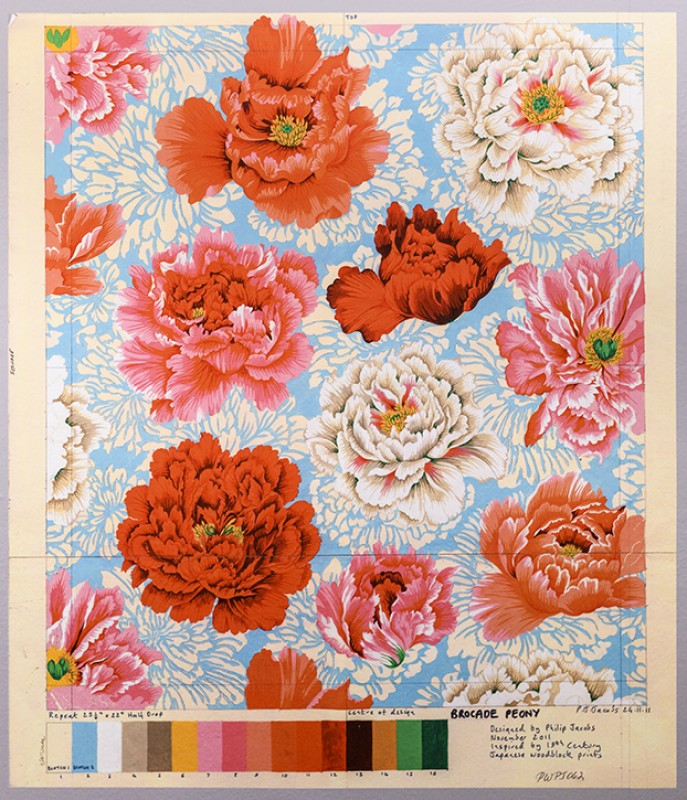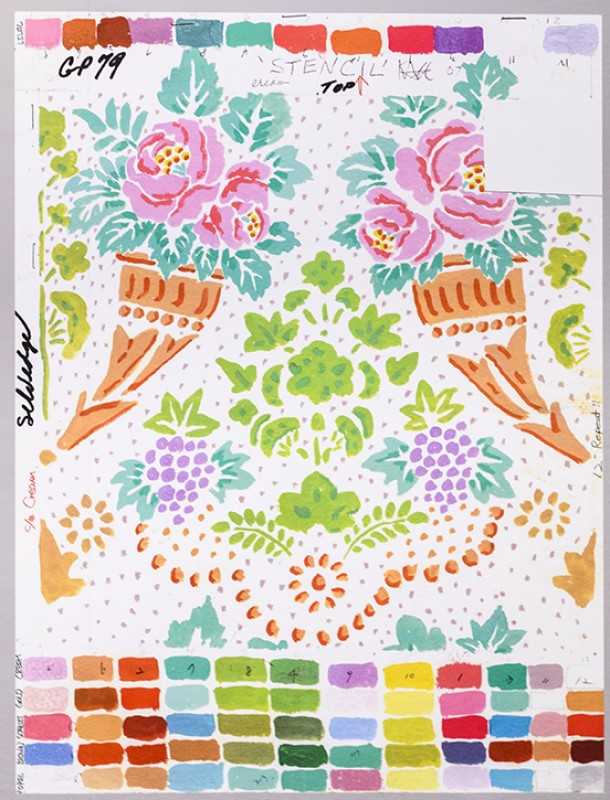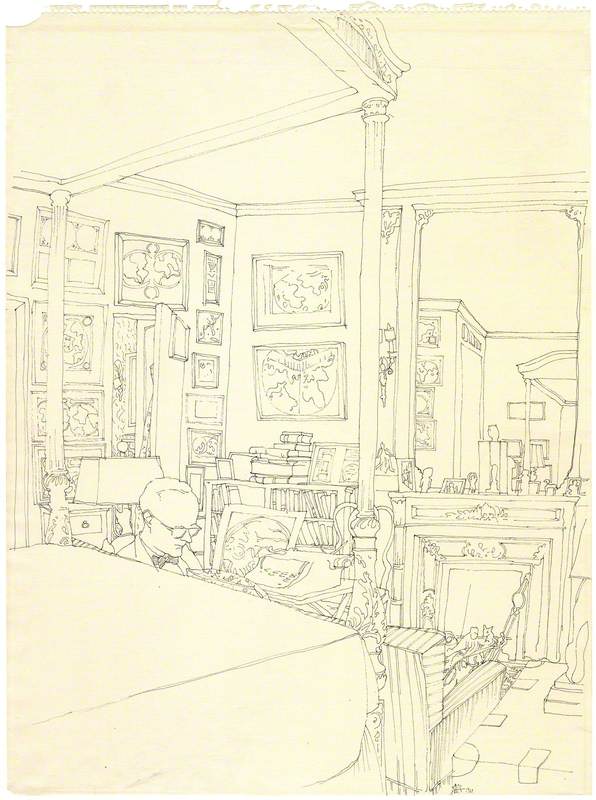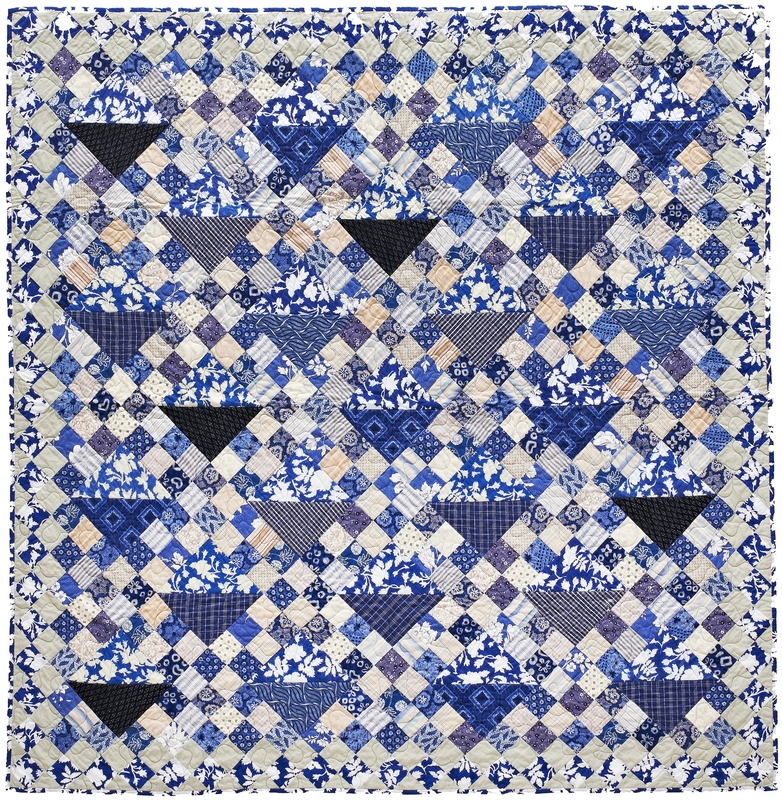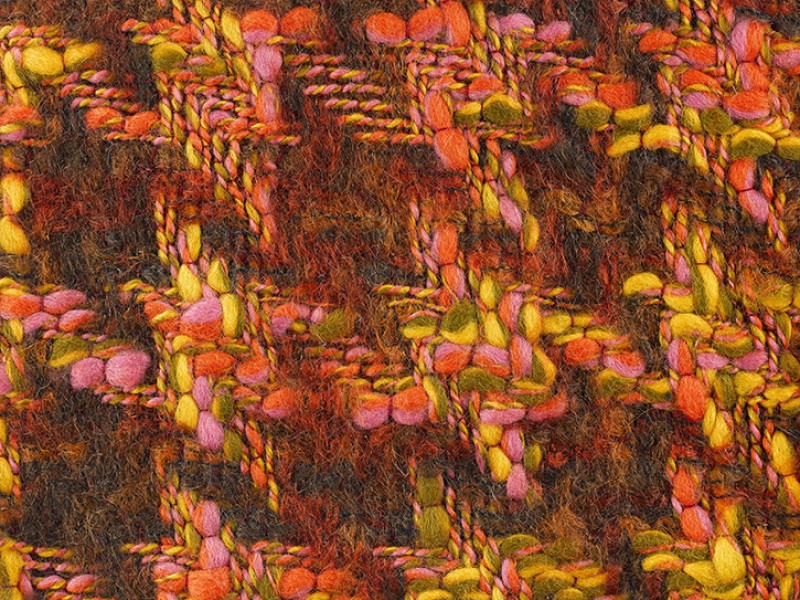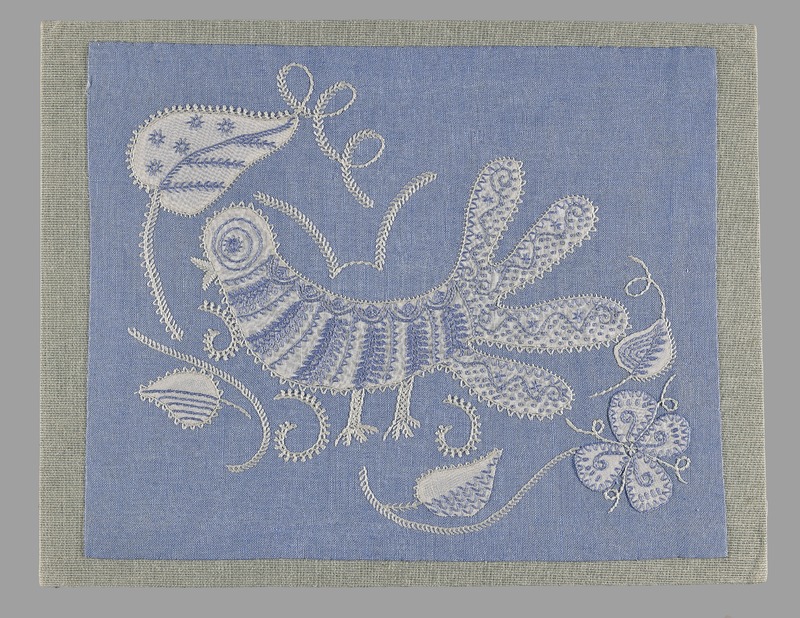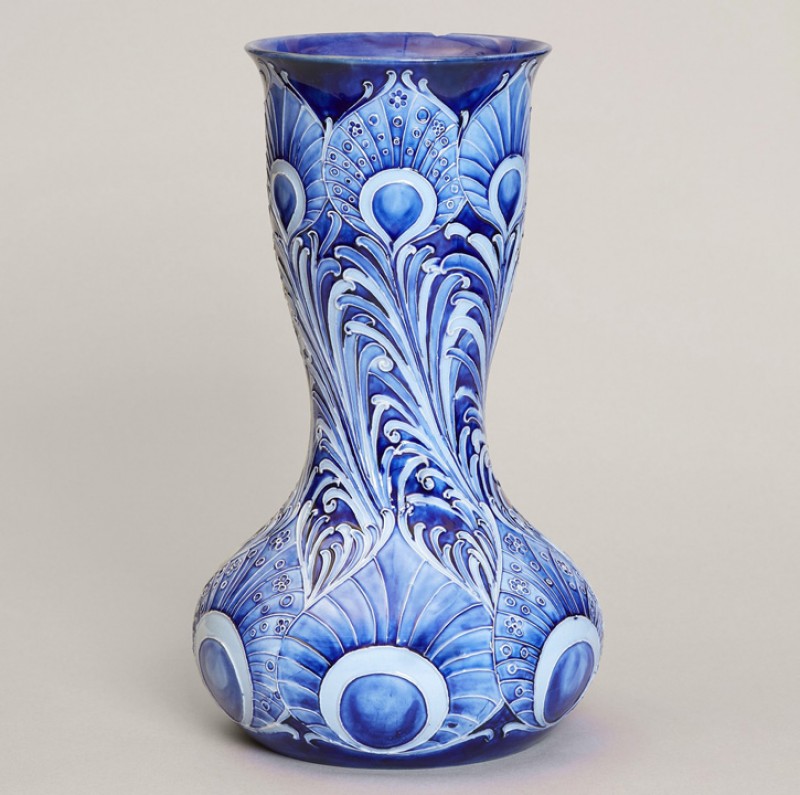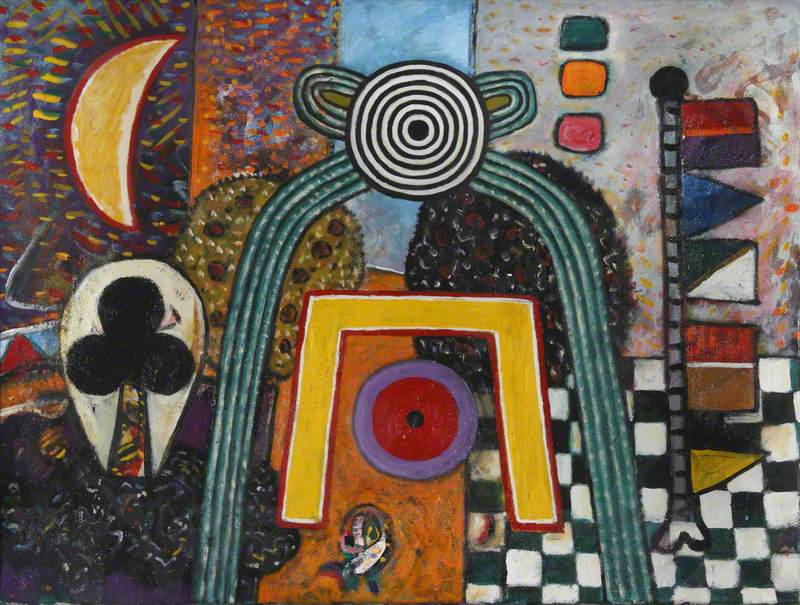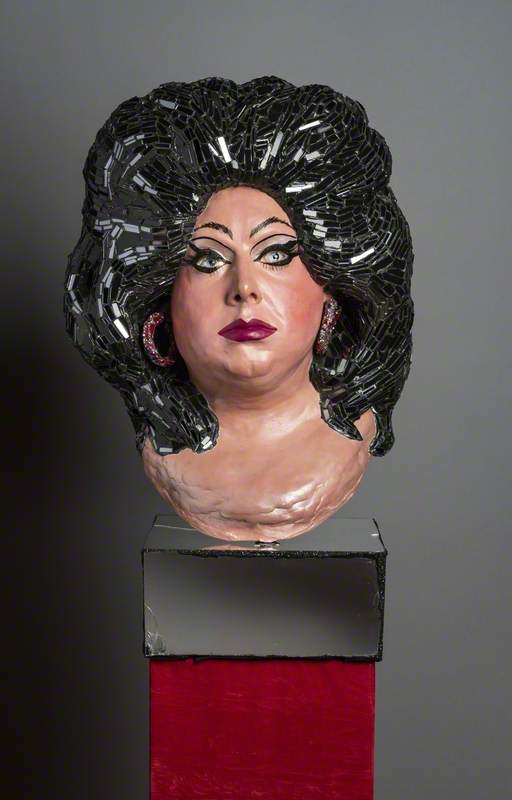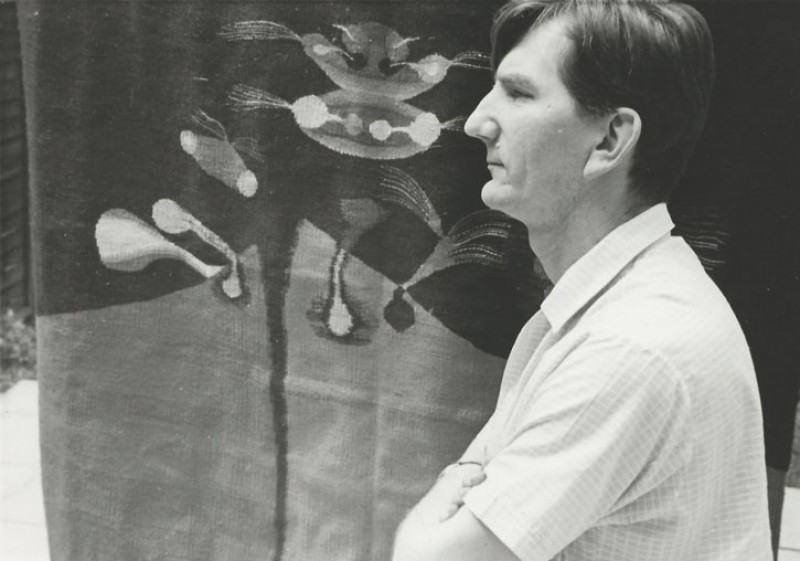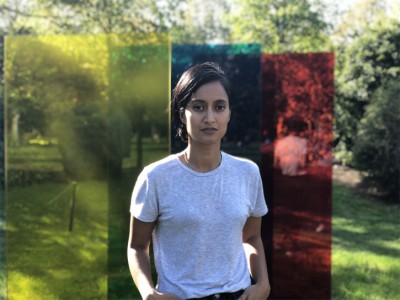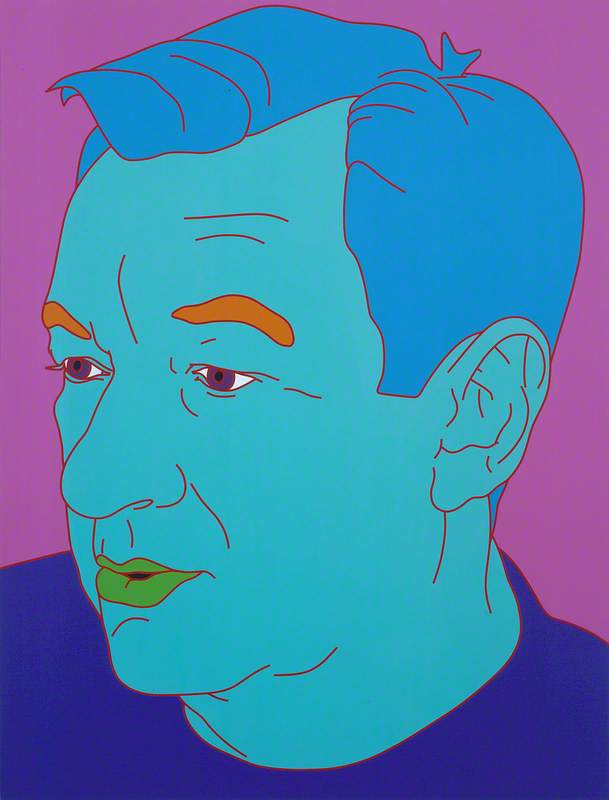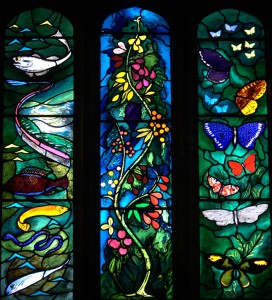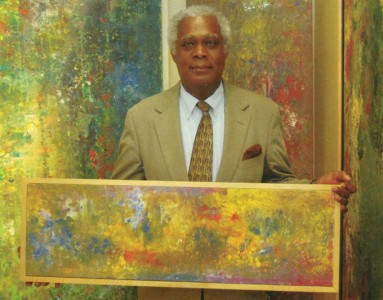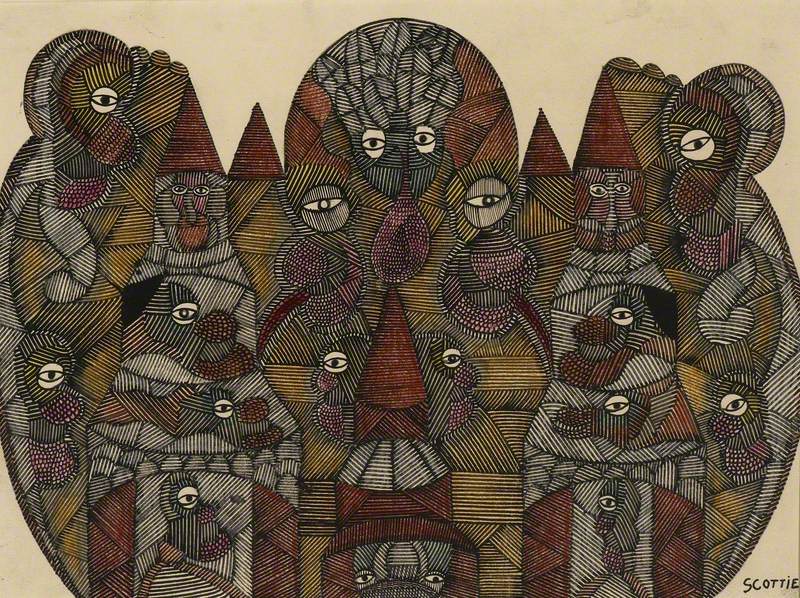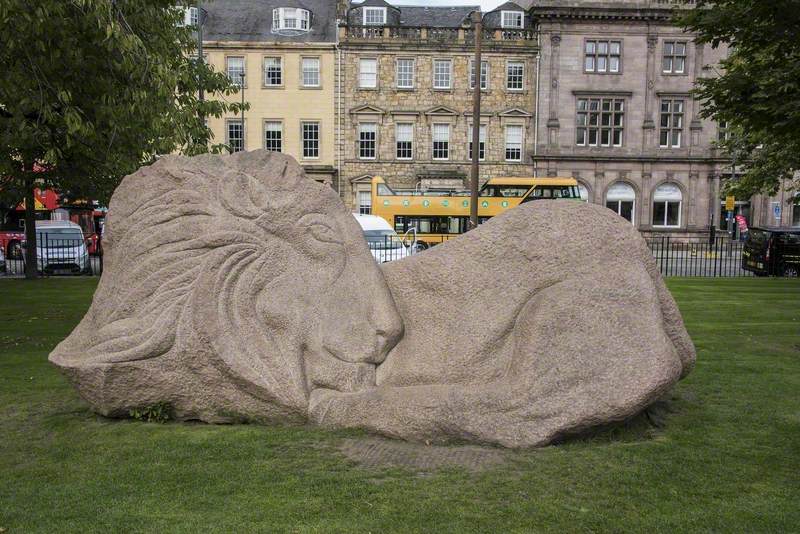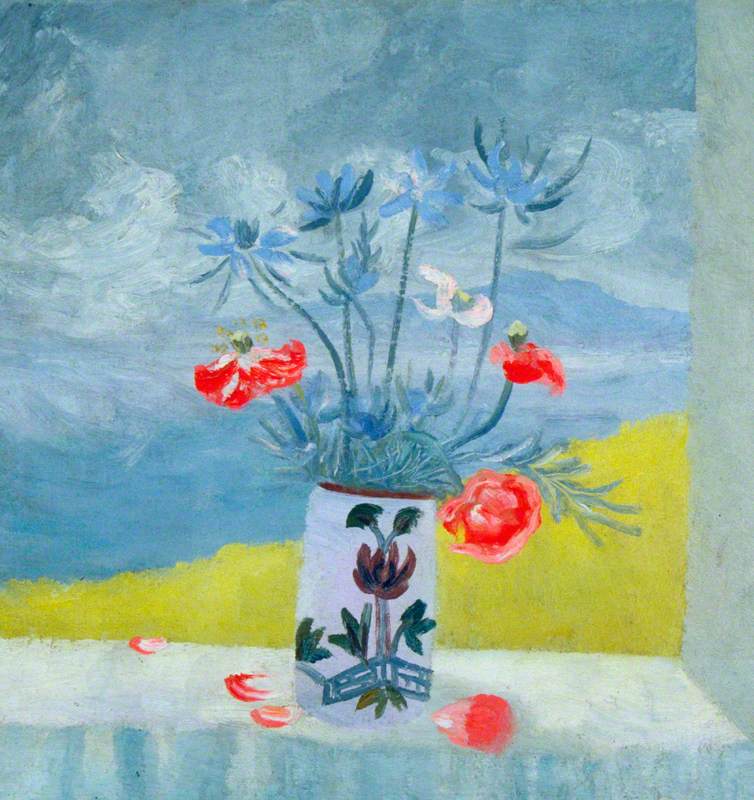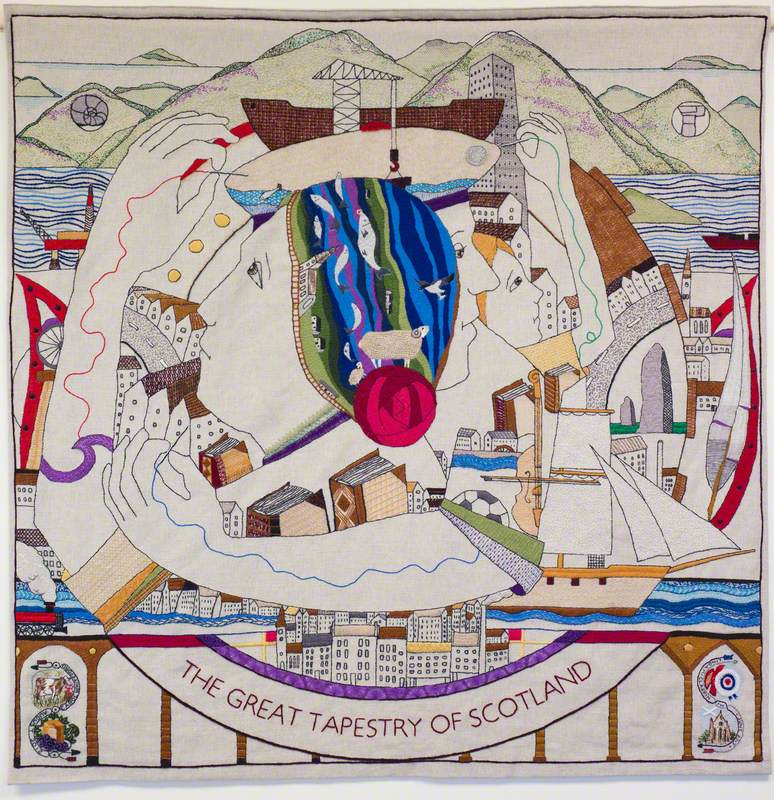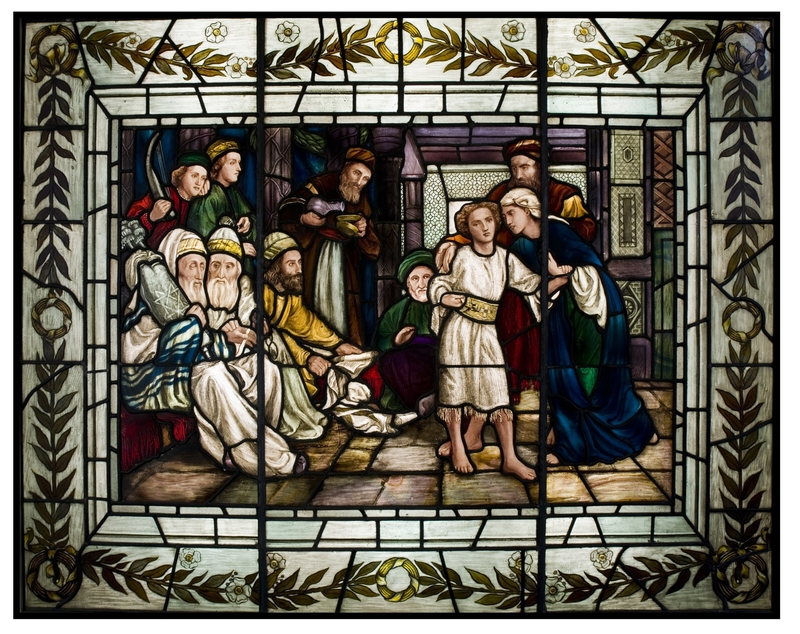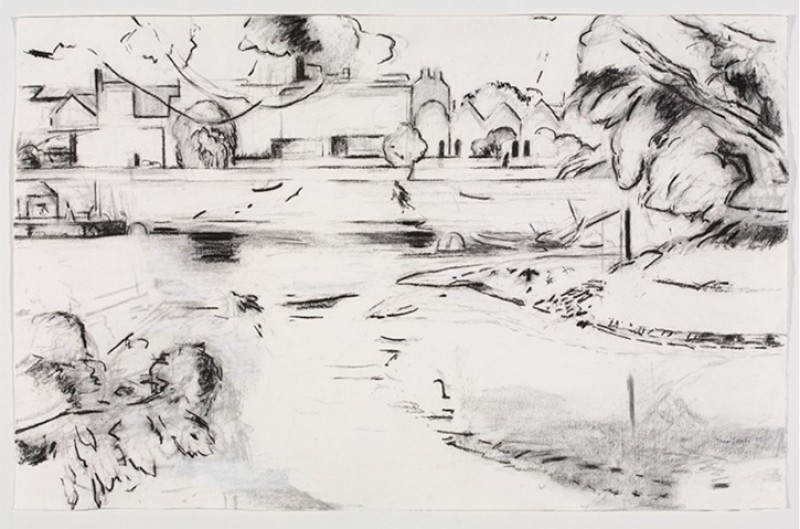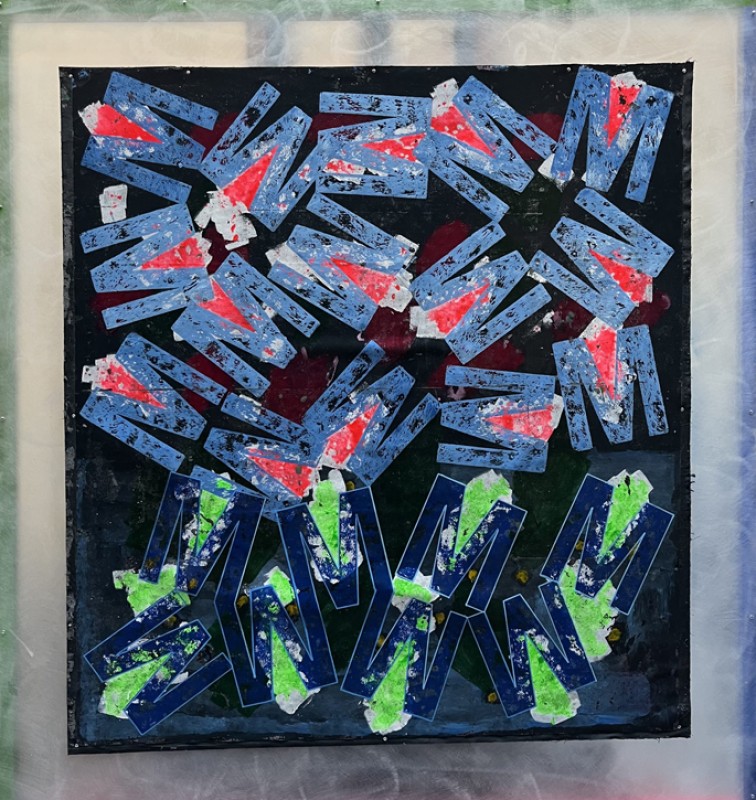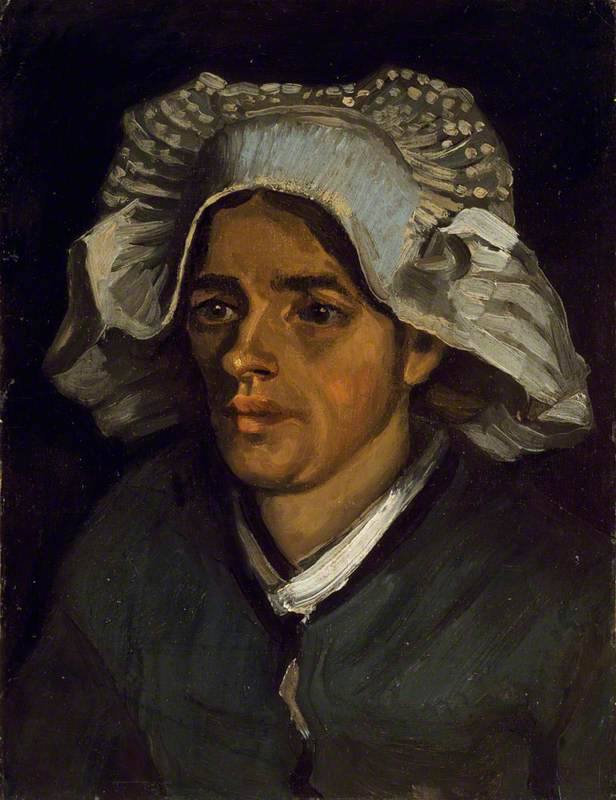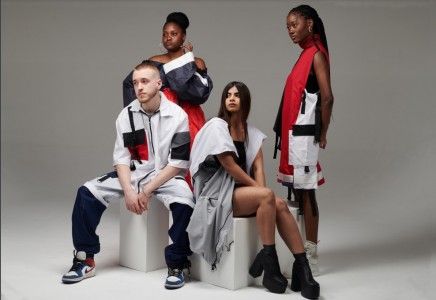Textiles are 'the art of mankind' argues Mary Schoeser in her comprehensive survey of the subject. They play a fundamental role throughout all human civilisation. Textiles are also at the core of Kaffe Fassett's artistic practice. For over seven decades, his passion for the properties of pattern, colour, yarn and texture has been expressed through textile. Working both with and against the mood and movements in contemporary art and design, he has charted a popular course.
Kaffe Fassett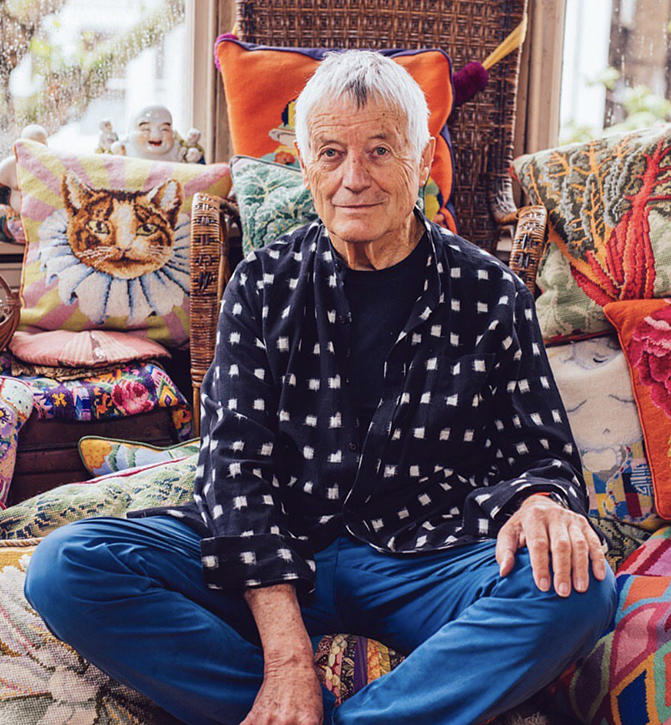
Today, Kaffe Fassett quilts, knitwear, needlepoint, mosaic and tapestry represent some of the finest examples of their kind. A 1969 Vogue photograph by David Bailey featuring Fassett's 'tapestry pattern knit cardigan coat and stripe sweater' was chosen to reflect the best UK fashion that year. In 1988, he became the first living textile artist to have a one-man show at London's Victoria and Albert Museum. The exhibition proved so popular it toured nine countries. Then, in the 1990s, he collaborated on a suite of tapestries with Dovecot, which became some of the most publicised work the Edinburgh Tapestry Company undertook that decade.
Few living artists can claim to have had the same influence over such a wide variety of media. Celebrated around the world for his work, and with high-profile commissions, best-selling books, yarn and materials in his name, his knowledge of colour and pattern is widely sought after by high-profile brands like Rowan, Designers Guild, Missoni and Coach.
Kaffe Fassett with a Chelsea Squares quilt from 'Quilts in Ireland', 2017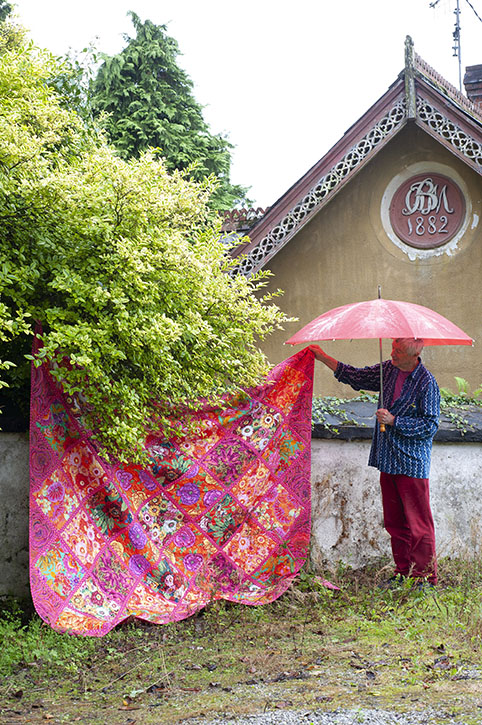
Fassett has also helped nurture generations of younger makers. As a teacher, his influence is profound. Stretching from the USA to Australia, his workshops have become an international phenomenon. His ideas and fabric are used by thousands, and his talks have encouraged hundreds more with practical advice and insights. It is this skill, Fassett's ability to inspire others to design, to make and to create, that is the subject of his latest exhibition.
Bordered Diamonds
2009, designed by Kaffe Fassett (b.1937), made by Liza Prior Lucy, quilted by Judy Irish. On loan from Liza Prior Lucy 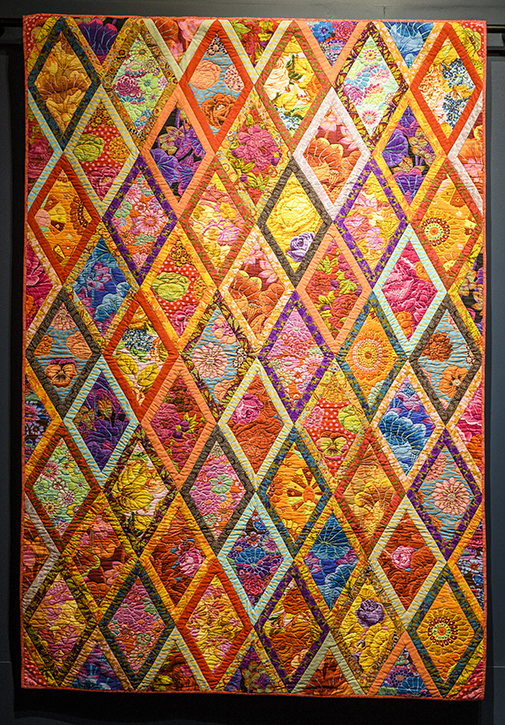
'Kaffe Fassett: The Power of Pattern' opens at Dovecot Studios in Edinburgh on 31st March 2023. It will be Kaffe Fassett's first major exhibition in the city. Dovecot is working with the Fashion and Textile Museum to organise the show, which features over 80 original artworks from international quilters and makers, as well as designs and textiles by Fassett. A key focus is a selection of quilts by artists from Australia, New Zealand, the USA, Canada and Taiwan, chosen by Kaffe and demonstrating the breadth of his influence.
Curated by Dennis Nothdruft, the exhibition explores the artist's eye for design and detail. He explains, 'Kaffe's kaleidoscopic vision creates a deep sensory connection with the viewer. This has emboldened people all over the world to make, and experience colour and pattern in exciting and new ways.' Nothdruft believes Kaffe's ideals reflect many ideals of the American Pattern and Decoration Movement artists of the 1970s and 1980s who challenged the traditional hierarchies and embraced pattern, ornament and craft. But Kaffe's artistic mission is more inclusive and goes further, 'he wants us all to participate and experience the joyous power of pattern for ourselves with needle, fabric and paintbrush.'
Kaffe Fassett painting 'Fruit Mandala'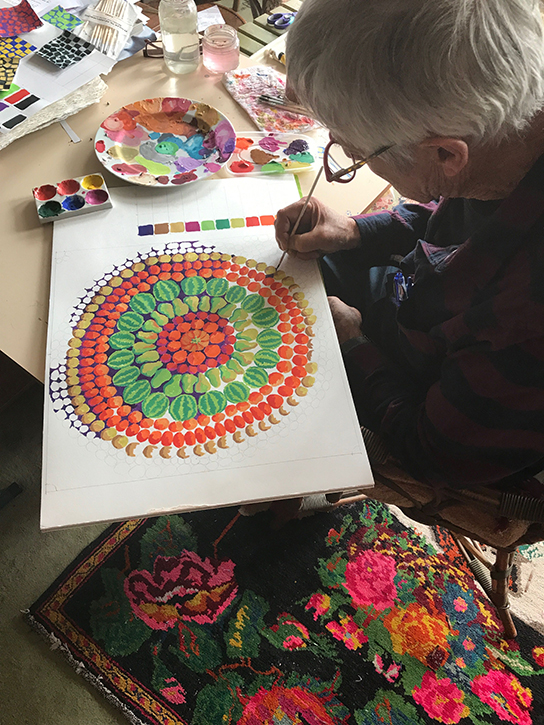
Kaffe Fassett's mission for 'everyone to join in' was forged in the artistic communities of Big Sur, Boston, New York, Bath and London's Notting Hill. Born in San Francisco in 1937, at the age of 11 his parents built a modernist restaurant, with views of the Pacific Ocean, called Nepenthe. This became a focal point for artists, writers and intellectuals.
In Fassett's biography, Dreaming in Colour, he recalls the freedom he had to explore the surrounding landscape as well as how his mother encouraged his creative education. Later, after studying at the School of Museum of Fine Arts in Boston, Fassett was encouraged to make a trip to England that was to change the course of his life and career. Moving initially to Bath, and then to London's Notting Hill in 1965, his fine art practice initially focused on painting. This changed in 1966 when he met the designer Bill Gibb and was introduced to the world of fashion.
Kaffe Fassett's early paintings and textile work show how his approach to colour and pattern has evolved. Complex and subtle mixes of colour and textures are highlights beginning with hand knits inspired by a trip to Scotland with Gibb and continuing today with the extraordinary quilts and ranges of quilt fabrics produced by the Kaffe Fassett Collective.
It was knitting that first drew Kaffe Fassett to textiles. Inspired by the hues and textures of the Scottish landscape plus his purchase of skeins of beautifully coloured yarns at a mill, Fassett was first taught to knit on a particularly long train journey from Aberdeen back to London. Over time, his knits were featured in Vogue Knitting and he collaborated with Gibb on knitwear, initially for a London couture house. In the early 1970s, Kaffe began a new collaboration with the Italian fashion house Missoni. Rosita and Tai Missoni's technical know-how and willingness to experiment were a perfect match for his distinctive colour palette. This partnership would have an enormous impact on 1970s style and fashions of the era.
Fire Flowers (Asian)
design by Kaffe Fassett (b.1937) 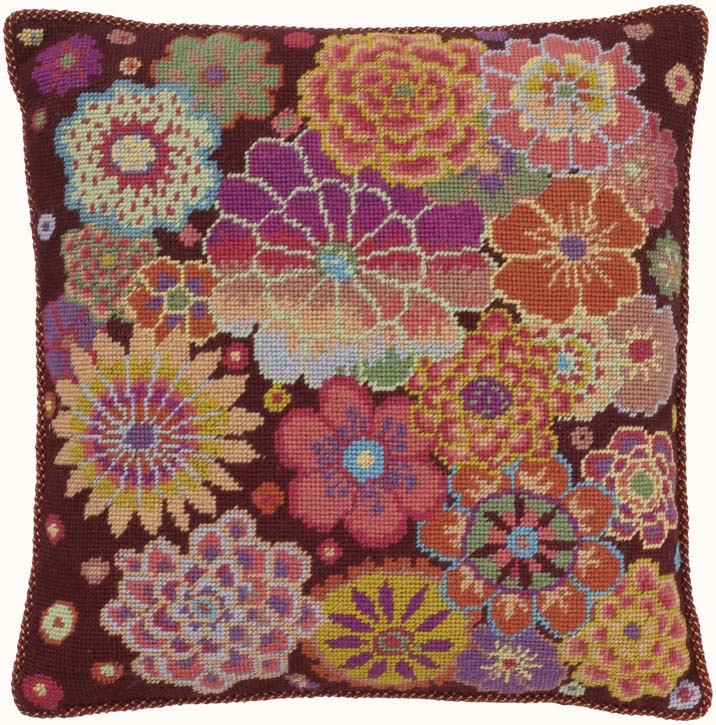
From this period onwards, Kaffe's practice expanded through his relationship with Rowan yarns. He had met not only the founder Stephen Sheard but also Hugh Ehrman, whose needlepoint business was in part inspired by his discovery of Kaffe while working for Vogue.
American quilter Liza Prior Lucy introduced Kaffe Fassett to patchwork and succeeded in encouraging him to start designing in the 1990s. His first quilt featured bold roses and florals in a simple pattern; the important point was the scale. His departure from the small-scale patterns of traditional quilting fabrics became a milestone in contemporary quilting.
Cameo
2016, colour study by Kaffe Fassett (b.1937) 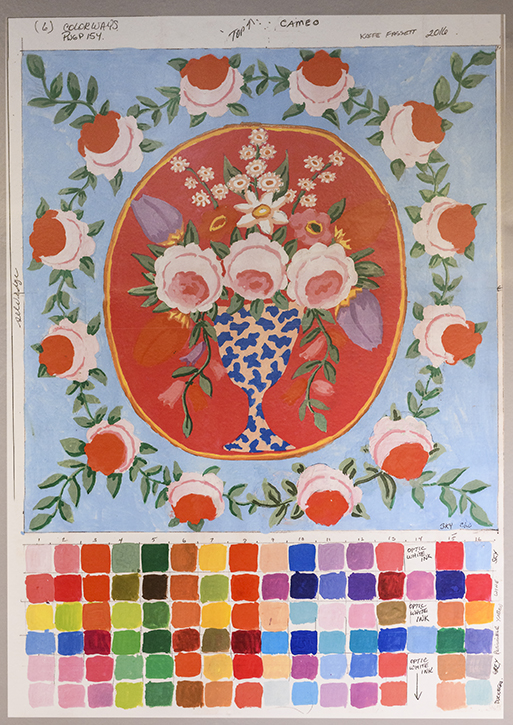
Kaffe Fassett acknowledges this turning point and how 'quilts would give a grand sense of scale to dramatise my use of colour, which my knitted garments could only hint at'. This shift in scale has inspired quilting communities around the world. With a number of books on the subject, including Glorious Patchwork in 1997, his spectacular quilt designs are distinctive and influential; and arguably one of the artist's most successful undertakings.
Shimmer Star
2009, designed by Kaffe Fassett (b.1937), made by Liza Prior Lucy, quilted by Judy Irish. On loan from the Kaffe Fassett Studio 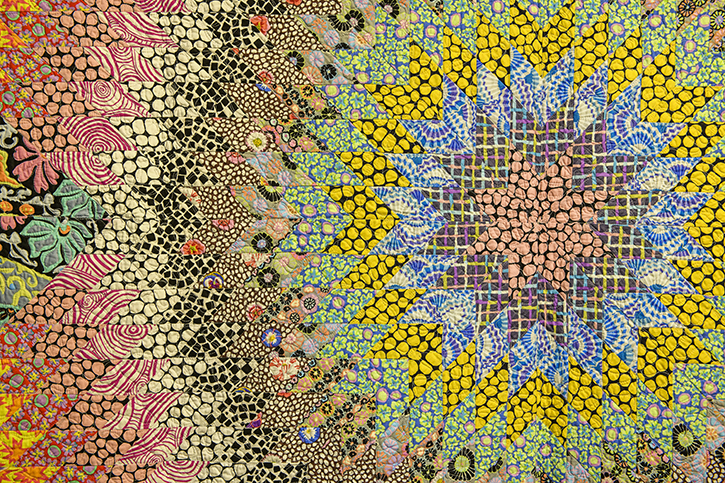
Kaffe Fassett and Brandon Mably working in the studio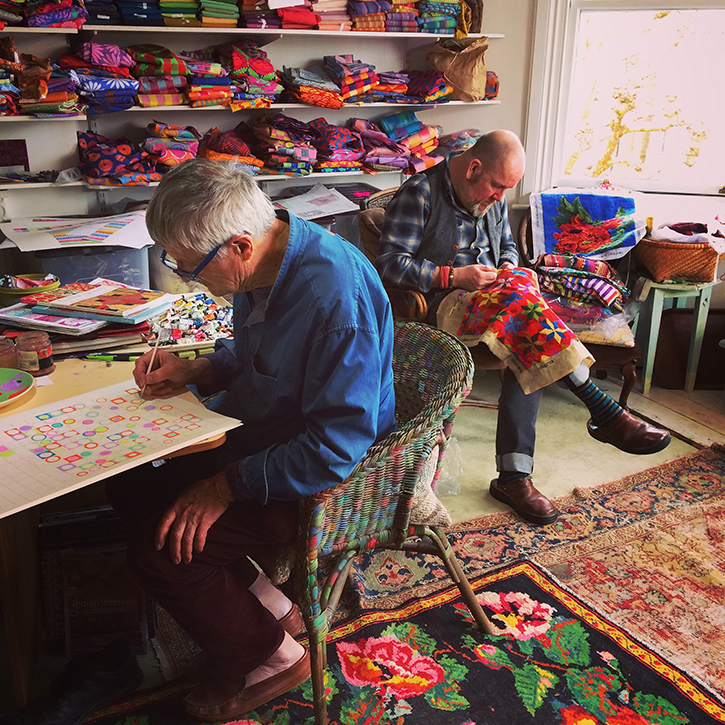
His creations have become so successful that today he leads the Kaffe Fassett Collective design group, along with artists Brandon Mably and Philip Jacobs. They design their own fabrics to support a bolder approach to colour and pattern. While many artists and fabric designers create their patterns digitally, Kaffe has stayed true to his roots and, for his entire career, he has hand-painted all of his designs.
'The Power of Pattern' highlights how Fassett's work in quilting and patchwork is defined by his belief in collaboration. His commitment to working as part of a community of artists who collaborate with materials, techniques and ideas is a consistent theme.
Achillea Collage Flower Basket
2016, fabric collage by Kaffe Fassett (b.1937). On loan from the Kaffe Fassett Studio 
This approach is an interesting reference point for the current zeitgeist of artist collectives such as Assemble (Turner Prize 2015) and Ruangrupa (Documenta 2022) looking to challenge the value system of mainstream art. While Fassett's outlook is less political, it is no less powerful because it speaks to the collective qualities of textile itself: the combining of different elements, fibres, yarns, dyes, warps and weft, to create an individual work. It is this aspect of the exhibition which sits so excitingly at the heart of Dovecot. Tapestry weaving is by nature a collective art form. So too are rug tufting and exhibition-making. The special relationship between artist and weaver, designer and maker, mentor and apprentice, is core to our mission at Dovecot and, in this, Kaffe Fassett's approach to pattern, colour and collaboration is an inspiration.
Celia Joicey, Director of Dovecot Studios
'Kaffe Fassett: The Power of Pattern' is showing at Dovecot Studios in Edinburgh from 31st March to 8th July 2023
